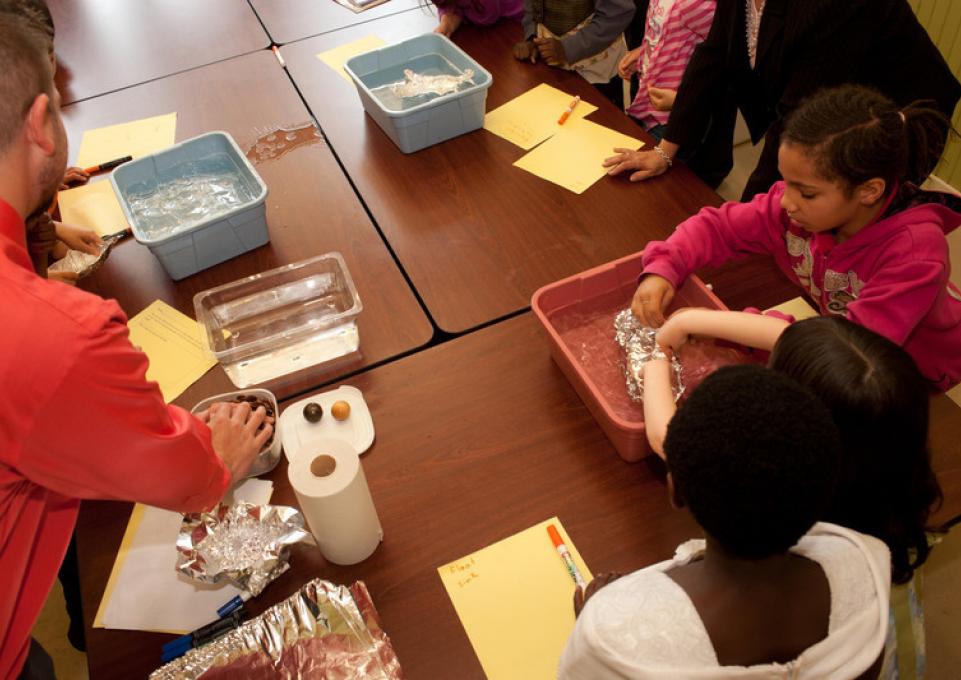
Aspiring science teachers at Buffalo State had the opportunity to work directly with refugee students this semester, thanks to a partnership with Buffalo State’s one-year-old Community Academic Center (CAC) on Grant Street. The CAC provides educational support to youth on Buffalo’s West Side.
The center’s "Buffalo Beginnings" program introduces refugee students and parents to the American education system, their new community, and American culture. Students taking the Science as Inquiry course with Robin Harris, associate professor of Earth Sciences and Science Education, created simple, interactive science lessons for young children who know very little English. “Although speaking to each other was difficult, the youngsters did well with hands-on activities,” Harris said.
The Buffalo State students visited "Buffalo Beginnings" in groups of four throughout the semester. “My students learned to have patience with the youth while learning how inquiry could be infused in every style of teaching, not just science,” Harris said.
In another course, Literacy for Teaching Science, her students taught interactive science lessons at an afterschool program at the CAC to students in grades four through eight. This was the first afterschool science program offered at the CAC and the first teaching opportunity for some of Harris’s students.
After each CAC visit, the students returned to Harris’s classroom and shared their experience with their colleagues. “They learned from each other as well as from the young students they helped,” Harris said.
Some of Harris’s students have volunteered to return to the CAC to help the youth. “It is important for my students to have real-life teaching experiences while in school,” Harris said.
These classes allowed Harris’s students to work with students from diverse backgrounds. “My students found out more about themselves and what they can offer these children,” Harris said. “They make connections with them, and it is important for the younger students to interact with college students.”
